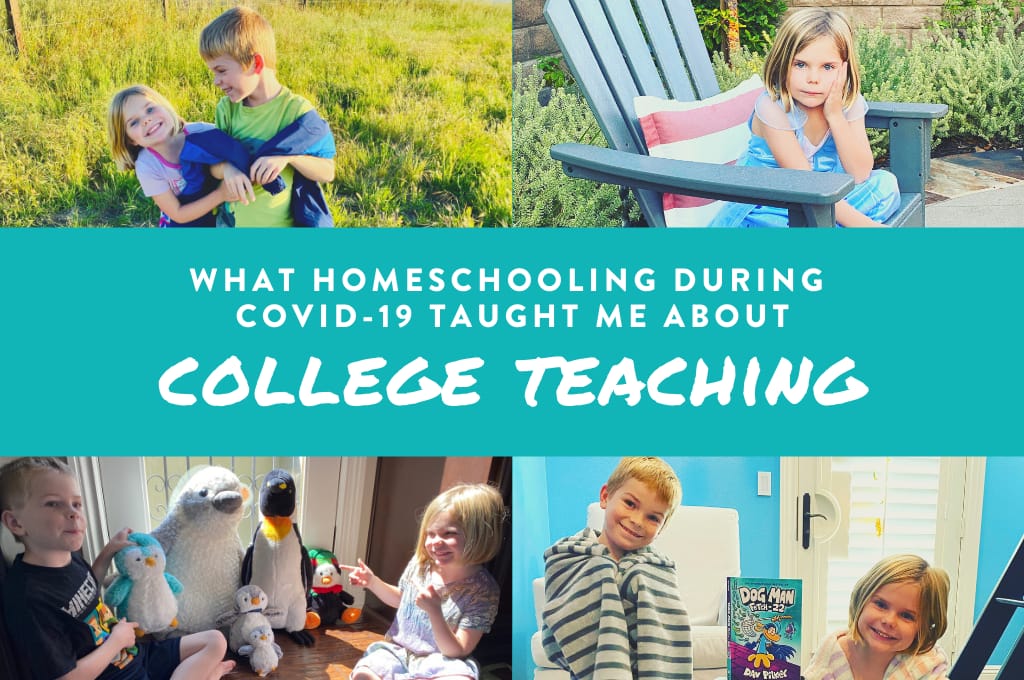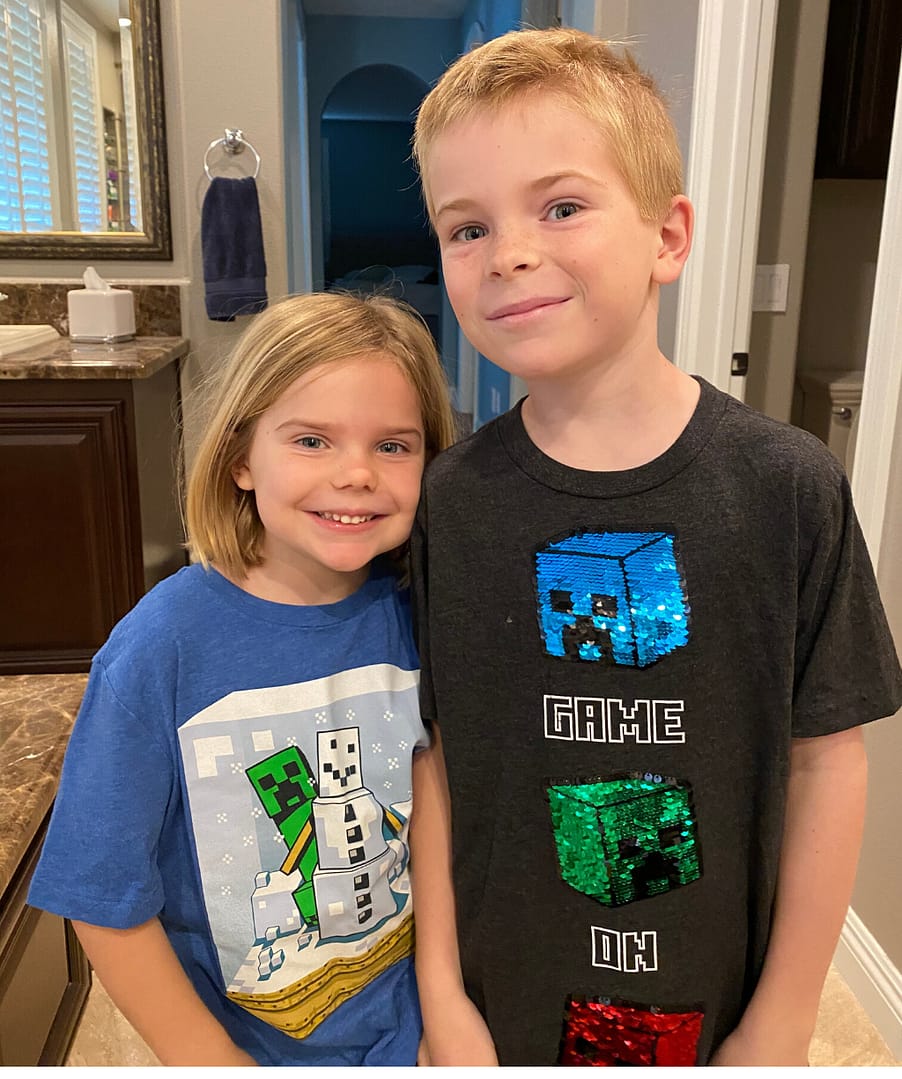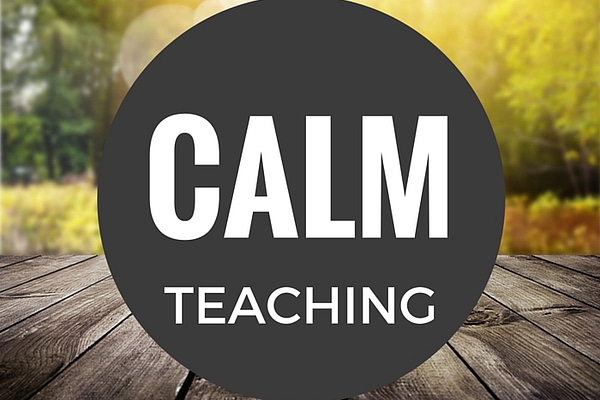
This article is part of the EdSurge guide Sustaining Higher Education in the Coronavirus Crisis and is reposted here with permission.
While I have always wanted to be a parent, I've never wanted to homeschool my kids. At the university where I teach, a number of our students come from a homeschooling environment. This educational context, so different from my own growing up, has always intrigued me. As students would share their experiences, I often realized that the home schools in my imagination were vastly different from what these young people described.
My husband, Dave, and I have now been thrust into the role of teachers for our two kids—one in kindergarten and the other in second grade—for the past couple of months. Their actual teachers are amazing. They have been working incredibly hard to make the switch to an online environment. The best thing about the experience for us has been getting to overhear their teachers referring to our kids by name and addressing their unique challenges and passions.
What has been less fun has been trying to come up with a set of systems that work for us. As we near the end date of this school year, I have been reflecting on the lessons that these experiences can provide for how to improve my own teaching going forward.
Less Is More
I don’t like to admit this, but at first in the homeschooling experience, I was too concerned about what the kids’ teachers would think about us, as parents. I wanted to ensure that each of the boxes got checked on the kids’ schoolwork, including the optional ones for music, the library and social/emotional content. The pressure to perform to some imagined level concerned me on a daily basis.
Finally, I reached a place where there just wasn’t any room to reflect on this as much anymore. I’m on our university’s COVID-19 leadership team, which means I’m in daily meetings and making recommendations to the executive team regularly. This role also has me reading around 20 articles a day and attempting to synthesize what I learned in some meaningful way. Additionally, I am responsible for leading our faculty development team and teaching classes of my own. Increasingly, the pressures of my work overshadowed my desire to ‘perform’ as an excellent homeschooling teacher.
The kids’ teachers did a good job of telling us what assignments or activities were most important, from their perspective. There are a couple of apps that gear the lessons to the kids’ knowledge and skills and prescribe interactive content based on their performance. I eventually got to the point where I would prioritize those activities over others. And I grew to understand that If we didn’t get to everything, it wasn’t going to cause irreparable harm to the kids’ learning.
As soon as I changed my perspective on quality over quantity, everything shifted. If the kids asked if they could go outside, my answer was always yes. I would take a lawn chair out front and enjoy grading in the shade of one of our trees. The kids were always able to focus more once we returned inside for more of the formal learning. Every Thursday, we have decided as a family to do themed school days. Their most recent theme was Minecraft day. Dave, my husband, shared that when the kids asked if they could record a Minecraft podcast that morning, he quickly agreed, even though that wasn’t anywhere on the calendar. He said to me later, “I threw out the planned curriculum the moment I saw how excited they were to create something together.”
This less-is-more approach has been cascading into my teaching more in recent years. I taught a business ethics course this semester in which I had honed the learning outcomes down into the most essential ones. This meant that when the pandemic struck, the current events were able to flow much more regularly into our class discussions. I modified the final assignment to be a manifesto. The ways in which students synthesized their learning was phenomenal. Many of them mentioned feeling equipped to continue learning about what they had discovered in the class much more than in other courses they have taken.
One of the students who just wrapped up my business ethics class, Hannah Clark, really exemplified these opportunities for deeper learning. Hannah and I discovered our shared love for the television show The Good Place during the first week of class. Each time I would see her after our initial meeting, I would ask if she had seen the latest episode, and we would talk about our favorite plot developments and characters. In Hannah’s manifesto project, she shared about five people she learned about in class who influenced her. Number one on her list was Immanuel Kant, who showed up both in our class content and in The Good Place TV show. Hannah was able to take what she was learning in the class into her entertainment choices, her work and her life. She regularly shared memes with me during the semester that related to the topics from our class, as well as articles and even songs.
It’s Harder Than It Looks to Avoid Transactional Approaches
When it comes to homeschooling, our kids want more than anything else to play Minecraft, Mario Kart or to watch television. When they were at their normal school, “choice time” meant they could choose from a number of activities within their classrooms. Their options always seemed to fit into something school-related. At home, it translates one hundred percent of the time to “screen time.”
I find myself slipping into transactional thinking on a regular basis throughout the day. “Once you finish your 30-minutes of iReady Reading, then you can take a break for a bit.” “Watch the video from your teacher and then come back and show me what you practiced. Then you can do something else for a while.” My ultimate desire is for them to be enjoying learning for learning’s sake. We most often get there these days on things that have nothing to do with school.
Most of us who teach yearn to have students who engage in the class well beyond the point of earning grades and checking boxes. Proponents of the ungrading approach argue that they can get there much more effectively because they remove grades from the equation all together. Jesse Stommel, digital learning fellow and senior lecturer of Digital Studies at University of Mary Washington, shares his rationale for ungrading on his blog:
“In short, the act of grading does harm to students and causes teachers unnecessary stress. Research shows grades don’t help learning and actually distract from other feedback/assessment.”
Other proponents of ungrading are make a case that grades can be, in many ways, arbitrary. The cutoff between a B and a B-, for example, seems so subjective, they assert. In her book, The New Education, Cathy Davidson describes how people in the meatpacking industry found that letter grades didn’t even adequately satisfy their needs to differentiate one cut from another, let alone trying to have grades measure something as complex as humans’ learning. While I haven’t fully adopted an ungrading approach in my teaching, I do often create assignments in which students either met the criteria, or they didn’t (known as specifications grading). This approach tends to contribute to less transactional relationships between me and my students, though I know there is still room for me to grow in this area.
Structure Matters
The most frustrating part of homeschooling for me is how hard it is to organize everything. The teachers have done a good job sending PDF documents that lay out most of the kids’ school activities. However, each of the sites they are directed to navigate to have separate logins and passwords. Our firewall that is intended to protect against any of us inadvertently visiting inappropriate sites often generates false positives for the kids’ schoolwork. This translates to them not being able to view the web pages where assignments are stored.
The school my kids attend stresses the importance of the social-emotional growth, so it sets up one-on-one meetings between kids on a weekly basis. After some parents expressed concerns about their kids spending too much time on screens, the school added some screen-free exercises to its website, which parents can print out to let kids complete them by hand.
My husband and I both work remotely, and we trade off leading remote schooling and focusing on our own job duties. So we try to set up a schedule for the kids so that they can move through a few school tasks at a time without us needing to guide them. We do our best to schedule related tasks together in the hopes that they can move from one activity to the next without us always needing to stop what we are working on to guide them. Our attempts work less than 20 percent of the time.
That means that Dave and my professional work contains constant interruptions. At least we have each other working from home, which allows us to rotate homeschool teacher duty between each other. We keep trying to tweak what we are doing to provide for less of a need for radical context shifting. I also realize part of this is the very nature of six-year-olds and eight-year-olds. Try not to laugh at me too much here.
Reflecting on the challenges my kids face in their remote schooling, I realize the students in the university classes I teach face similar challenges. The learning management system (LMS) I use allows the instructor to see the course from a student’s view. And I used to spend a great deal of time considering how to set up pages, assignments and other content from within my course, only to discover that the vast majority of students never saw the fruits of my labor. Instead, they looked at the centralized due dates from all of their courses, consolidated on the main login page. They rarely clicked sequentially through the items the way I had constructed them. I found it was more helpful to think about the cadence of due dates and breaking larger assignments into smaller tasks whenever possible.
I have also learned to think carefully about how I label each assignment in the LMS. The goal is to indicate whether what I am posting is something they should take a look at, or something that requires some kind of action on their part. I use names like: “SUBMIT: Paper” and “READ: Chapter 4,” in an attempt to make it was clear as possible what is required.
My goal is to have as much contained within the LMS as possible, too. Most LMSs can be set up to integrate with external tools, making it easy to make use of preferred educational technologies without students having to remember another login and learn an entirely different system. Quizlet, a tool for creating digital flashcards, is an example of an external tool that is also available within our LMS. Students never have to leave the LMS to review the flashcards for our class, or to play the associated review games.

I mentioned our kids’ love of Minecraft and how that’s often the reward at the end of their time spent on schoolwork. This week, on the themed Minecraft day, our son decided to loan his sister a Minecraft shirt so she could better celebrate the day with him. They read Minecraft books and played a Minecraft tag game outside. When it came time to do his assigned poetry lesson, he decided to write it on—you guessed it—Minecraft. I share his poem, below, with his permission.
Minecraft day
At school
I loan
My sister
Creeper
Shirt
For Minecraft day
The best
Day.
It has been quite an experience navigating homeschooling along with helping our entire university transition to remote teaching. It has caused me to reflect on much about teaching and learning these past few months. I have felt like a failure some of the time. In other cases, I have been elated at catching glimpses of the power of learning—and its messiness.



[…] What Homeschooling During COVID-19 Taught Me About My College Teaching (Teaching in Higher Ed, 01/06/2020) […]